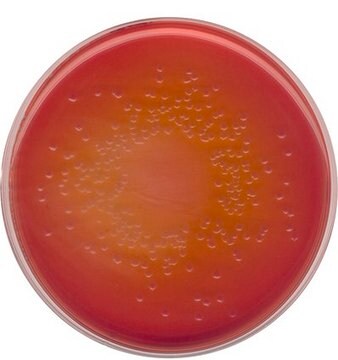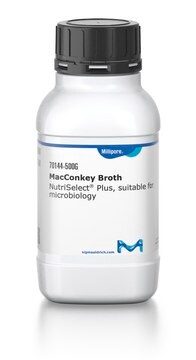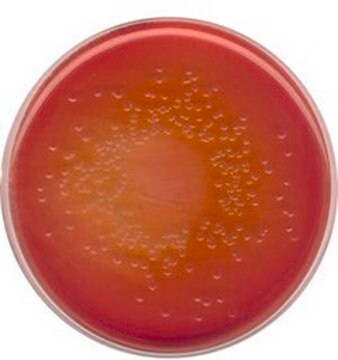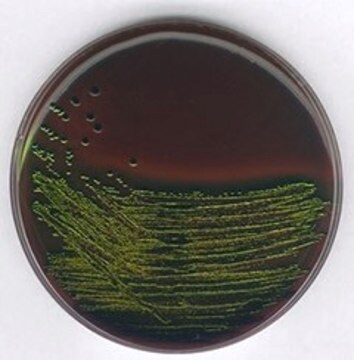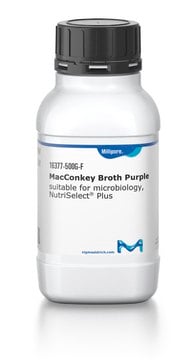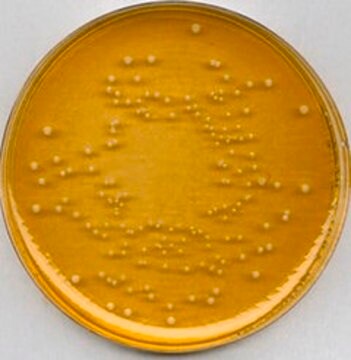51405
MacConkey-Agar (without salt)
suitable for microbiology, NutriSelect® Plus
Sinônimo(s):
MacConkey-Agar (without salt and crystal violet)
About This Item
Produtos recomendados
esterilidade
non-sterile
Nível de qualidade
forma
powder
prazo de validade
limited shelf life, expiry date on the label
composição
agar, 12 g/L
bile salts, 5 g/L
lactose, 10 g/L
neutral red, 0.075 g/L
peptone, 20 g/L
fabricante/nome comercial
NutriSelect® Plus
técnica(s)
microbiological culture: suitable
pH
7.4±0.2 (25 °C)
aplicação(ões)
clinical testing
environmental
food and beverages
microbiology
adequação
Acinetobacter spp.
selective and differential for Enterococcus spp.
selective and differential for Escherichia coli
selective and differential for Proteus spp.
selective and differential for Salmonella spp.
selective and differential for Shigella spp.
selective and differential for Staphylococcus spp.
selective and differential for coliforms
selective and differential for enterobacteriaceae
Aplicação
Nota de preparo
Nota de rodapé
The designations basic, plus, or prime are added to indicate the quality control level, from basic quality control to standard QC plus to prime for full regulatory compliance.
Informações legais
Código de classe de armazenamento
11 - Combustible Solids
Classe de risco de água (WGK)
WGK 3
Ponto de fulgor (°F)
Not applicable
Ponto de fulgor (°C)
Not applicable
Equipamento de proteção individual
Eyeshields, Gloves, type N95 (US)
Escolha uma das versões mais recentes:
Já possui este produto?
Encontre a documentação dos produtos que você adquiriu recentemente na biblioteca de documentos.
Os clientes também visualizaram
Artigos
Salmonella contamination is the second leading cause of food-borne illness worldwide. Controlling outbreaks of Salmonella is an important task for food regulators, restaurants and the food industry in general. The Salmonella family includes over 2,300 serotypes of bacteria, but two types, Salmonella enteritidis and Salmonella typhimurium, are responsible for about half of all human infections. Most outbreaks of Salmonella are traced back to dairy, poultry and meat products, but Salmonella can grow on nearly any food. Chicken, eggs and their derivative products are particularly high risk.
Nossa equipe de cientistas tem experiência em todas as áreas de pesquisa, incluindo Life Sciences, ciência de materiais, síntese química, cromatografia, química analítica e muitas outras.
Entre em contato com a assistência técnica
